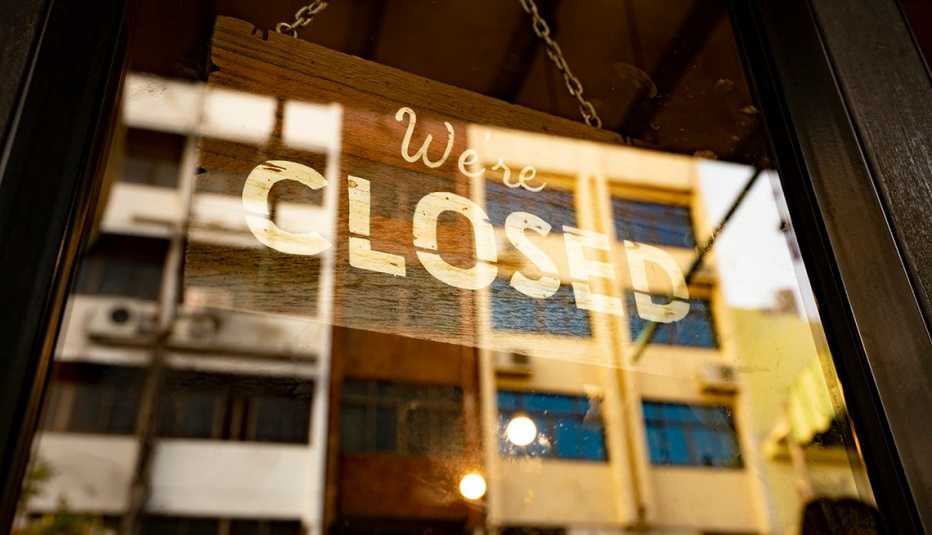Staying Fit
The CARES Act signed into law in late March offered some relief to the nation's estimated 30 million small businesses, especially through its Paycheck Protection Program (PPP), meant primarily to cover employee payroll costs. But many entrepreneurs, including many of the country's estimated 4.4 million Hispanic small-business owners, didn't even have a chance to start the application process before the initial $349 billion funding ran dry in just 13 days, while others didn't complete the application due to widespread confusion about the process. While the PPP eventually did receive additional funding, the program closed its application process on June 30, 2020.


AARP Membership— $12 for your first year when you sign up for Automatic Renewal
Get instant access to members-only products and hundreds of discounts, a free second membership, and a subscription to AARP the Magazine.
"Most small-business owners don't have CFOs or full-time accountants,” said Nely Galán, 57, a well-known Latina entrepreneur who has been running webinars in English and Spanish to guide others through the application process for both the PPP and the Economic Injury Disaster Loan Program (EIDL). “The struggle of running our companies during a crisis and then filling out confusing forms we don't understand and with no help — it's too much.”
The PPP eventually did receive additional funding, and the deadline to apply for assistance has been extended to August 8, 2020.
While both the PPP and the EIDL are types of loans — and businesses could apply for both — their intended purposes are different. Businesses can apply to the PPP through a lending institution approved by the Small Business Administration (SBA) for loans of up to $10 million to maintain payroll and related benefits, interest on mortgages and other debts, leases, and utility payments. One of the main draws of the PPP is that 100 percent of the loan can be forgiven if the funds are used properly. For the EIDL, however, businesses apply directly through the SBA for up to $2 million in financial assistance to cover a wider range of daily business expenses, from payroll and accounts payable to fixed debts. While the EIDL is not forgivable, you may qualify for a $10,000 advance that may not have to be repaid.
On April 27, the SBA once again began to accept PPP applications after Congress approved an additional $310 billion in funding, with some of that set aside specifically for smaller banks that tend to work with underserved communities. “The SBA has taken measures to ensure that small and medium-sized banks have an equal opportunity to access the PPP funds on behalf of their customers,” Victoria Guerrero, district director of the SBA in South Florida, said at the time. “Such efforts are helping ensure small businesses with local and community-based relationships get the capital they need to keep their employees on the payroll."
According to recent studies, over the past 10 years, the number of Latino business owners grew 34 percent, compared to 1 percent for all business owners in the United States. Within this group, businesses owned by Latinas, like Galán, are increasing, accounting for 44 percent of Latino-owned businesses.
"I ran these [PPP and EIDL] webinars in Spanish because I am Latina and I wanted all those Latino business owners who are holding up this country and hiring so many family and community members to feel part of this process,” Galán said. “I want them to know they deserve this money, and I wanted to show them how to get it."
AARP® Dental Insurance Plan administered by Delta Dental Insurance Company
Dental insurance plans for members and their families
The answers to the following 10 questions will help you understand key points about PPP and EIDL assistance:
1. Given the backlog of applications, should I still apply to the Paycheck Protection Program if I haven't already started the process? What about the Economic Injury Disaster Loan?
The PPP did temporarily stop accepting new applications for assistance on June 30, 2020, then a new law was enacted that has extended the deadline to August 8, 2020.
Small-business owners interested in applying for the PPP loan should contact their banks immediately to find out if they are still accepting applications. If not, entrepreneurs can find a list of SBA-approved local assistance.
The online portal to apply for the EIDL is currently open, but is accepting applications only from agricultural businesses right now. Once the SBA begins accepting EIDL applications for other types of businesses, the deadline to apply will be Dec. 18.
2. I applied for the last round of funding. Do I need to reapply? What if the criteria for funding change?
You do not need to reapply for the PPP loan, but you may want to follow up directly with your bank — not the SBA — if you have yet to hear a decision. It's important to remember that your bank will inform you of your PPP approval, not the SBA. The SBA system will allow only one PPP loan per applicant, and you will not lose your place in line once your original application is already in the system.
For the EIDL, matters are a bit trickier. “If your application starts with a 3, it's in the process of being reviewed and you do not need to reapply,” according to Guerrero. “If it starts with a 2, we are asking that you reapply” using the three-page streamlined application.
Reapplying will ensure your information is entered into the new SBA system, says Guerrero. The two applications will be matched, and applicants will not lose their original place in the queue. After your application has been submitted, the SBA disaster relief team will communicate directly with you via phone or email. Guerrero also advises applicants to check spam and junk mail folders just in case an email from the SBA gets trapped in there.
Expect to wait about four to five weeks for your EIDL application to be reviewed and processed, says Guerrero. For questions regarding your EIDL application, you can call 800-659-2955 from 8 a.m. to 8 p.m. any day of the week or email disastercustomerservice@sba.gov (in English and Spanish).
You do not need to reapply for either program if criteria for funding change. “Whatever the criteria was when you submitted your application is what will be followed,” Salas says.



































































